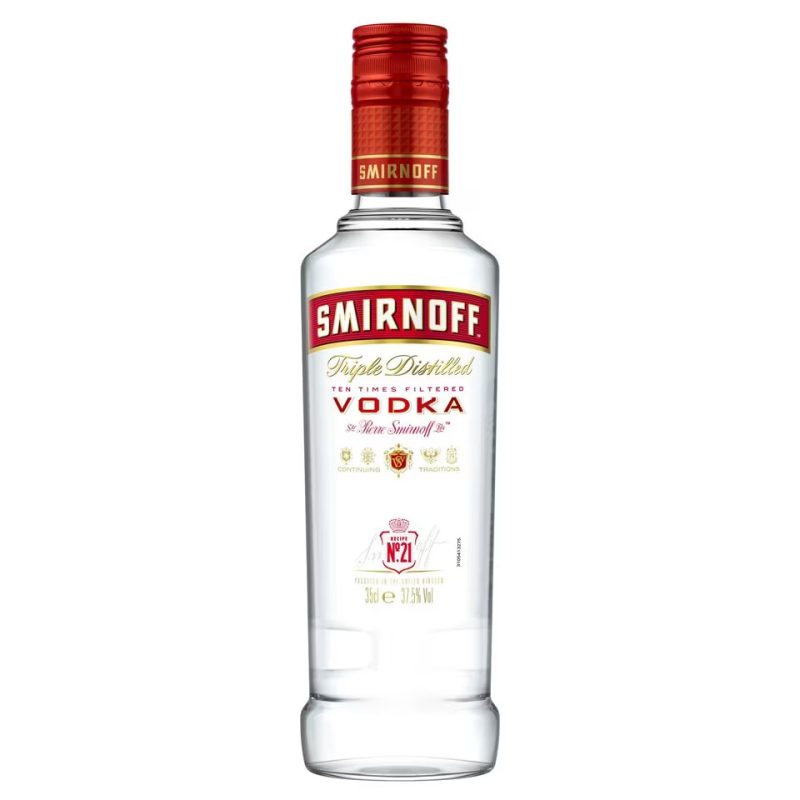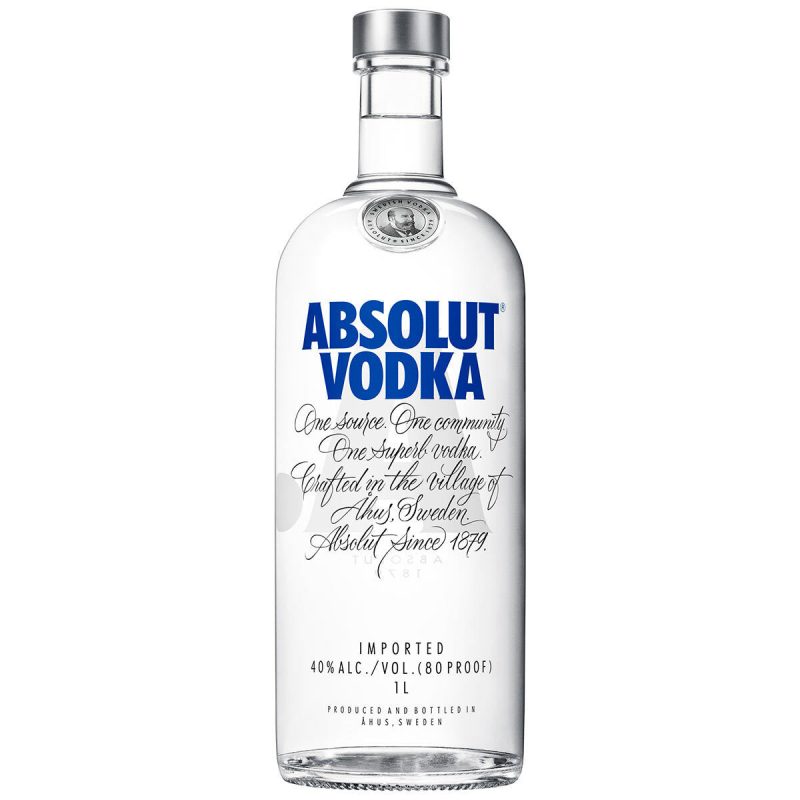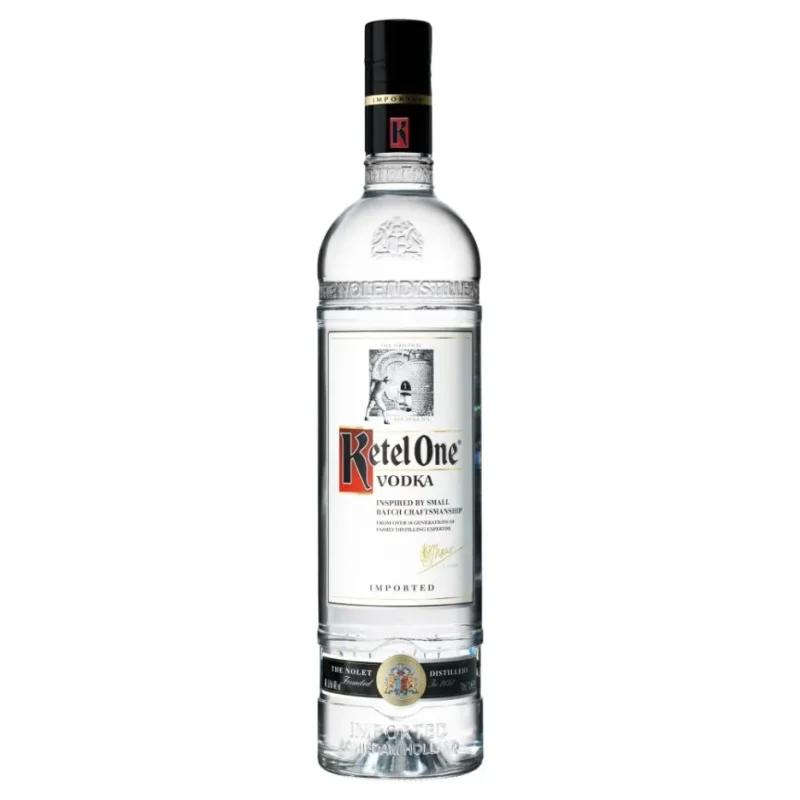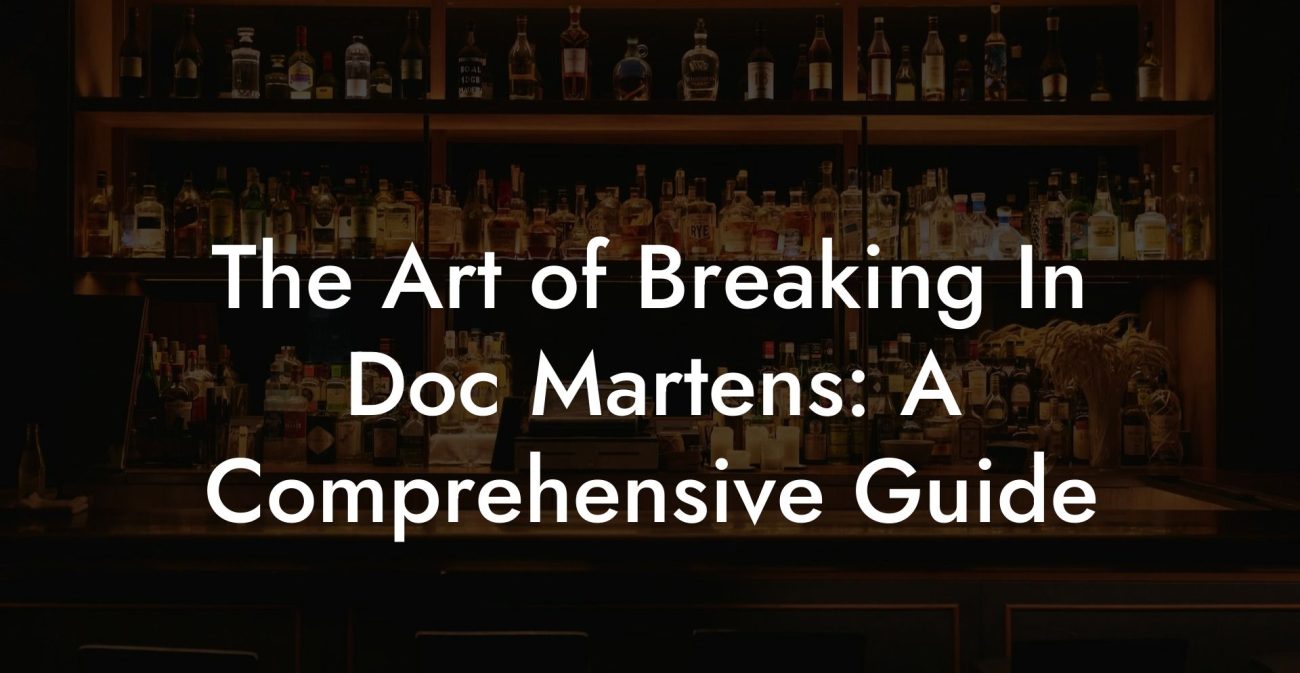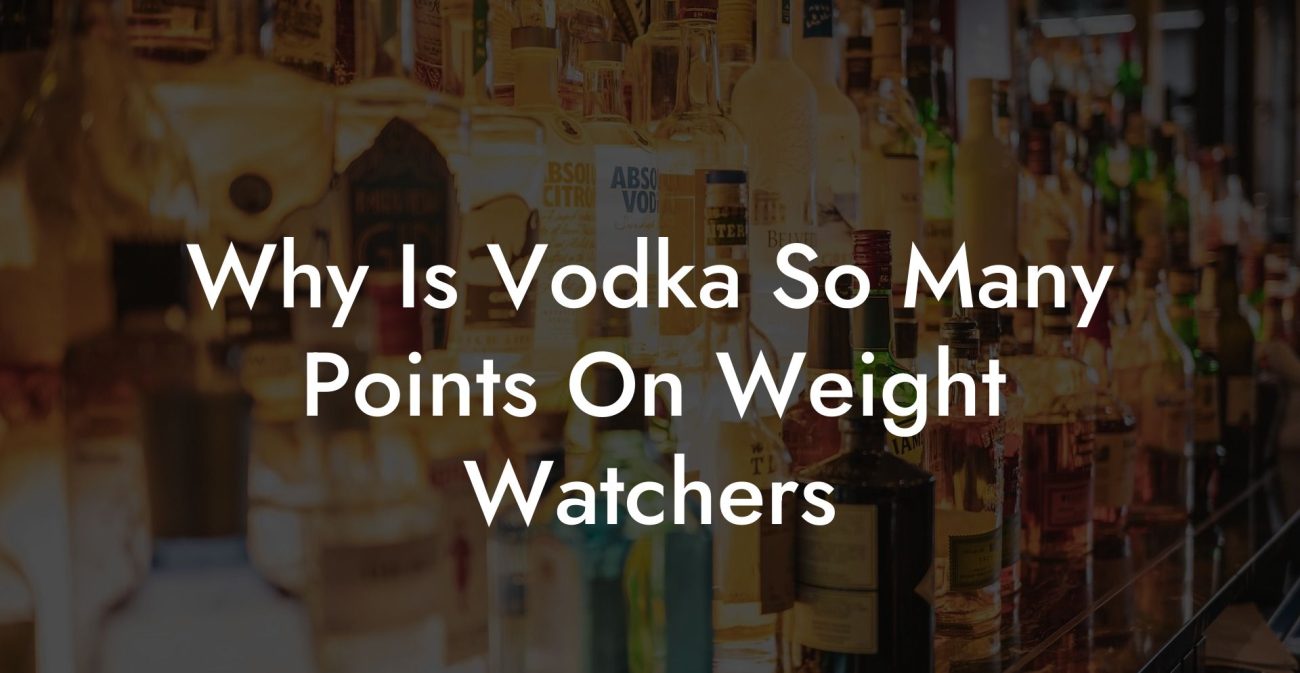Ever found yourself at a party, cocktail in hand, wondering if your vodka is packing enough punch or if it’s just there for the aesthetic? Trust us, you’re not alone. Dive into this rollercoaster of a guide that breaks down the mystique behind vodka proofs with a blend of savvy science, a dash of history, and a whole lot of humor that even your meme-loving best friend would applaud.
How Many Proof Is Vodka Table of Contents
Understanding Alcohol Proof: More Than Just a Number
How Many Proof is Vodka, Anyway?
The Science (and A Bit of Art) Behind Vodka Proof
Exploring the History of Alcohol Proof
Modern Vodka Proofs: From 80 to 100 and Beyond
How Governments and Regulatory Bodies Measure Vodka Proof
DIY Vodka Proof Tests: Fun Experiments (But Don’t Try This at Home)
Mixology Magic: Vodka in Cocktails and Beyond
Health, Safety, and Responsible Enjoyment
Beyond Vodka: Exploring Other Spirits and Their Proofs
Resources and Community Support: Your Next Steps
Vodka in Pop Culture: From Movie Nights to Meme Dreams
Vodka Proof in the Digital Age: Apps, Gadgets, and Innovation
A Toast to Curiosity: Embracing the Vodka Journey
Looking For The Best Vodka? You'll Love These Vodka Guides...
What Exactly Is Vodka?
Vodka has long been the life of the party, the base for countless cocktails, and sometimes a very questionable excuse for staying up past midnight. Originating from the icy realms of Eastern Europe, this spirit has evolved over centuries into the clear, neutral powerhouse we know today. Whether you're a fan of the classic Russian style or the flavored varieties populating your local liquor store’s shelf, vodka's clean taste and versatile nature have earned it a top spot in the world of distilled spirits.
Made primarily from fermented grains, potatoes, or even fruits, vodka undergoes a rigorous distillation process that strips it of most flavor proteins and congeners, leaving behind a spirit that’s prized for its purity. But have you ever stopped to consider how strong your vodka really is? That’s where the concept of "proof" comes into play.
Understanding Alcohol Proof: More Than Just a Number
If you’re envisioning some sort of secret agent code when you hear “proof,” think again. In the world of spirits, proof is a measurement of alcohol content—a way to quantify exactly how much kick is packed into each drop. But, as with many things in life, this concept comes wrapped in history, science, and a healthy dose of confusion.
The term “proof” originated in the 18th century when British sailors and merchants needed a reliable method to determine the potency of their rum shipments. The idea was simple: if you could ignite a bit of the spirit, it was deemed “proof” that the rum was strong enough to be taxed accordingly. Fast forward to today, and while we no longer use flaming tests (thankfully!), the term “proof” remains a standard marker on bottles of vodka and other spirits.
In the United States, the proof of an alcoholic beverage is defined as twice the percentage of alcohol by volume (ABV). So, if a vodka is labeled as 80 proof, that means it contains 40% ABV. It’s a neat, if not a slightly quirky, way to keep track of just how spirited your drink is.
Best Budget Vodkas Ranked
How Many Proof is Vodka, Anyway?
Now, let’s get to the million-dollar question (or maybe just the 80-dollar question): How many proof is vodka? The answer is a bit like your favorite pair of jeans—it can vary. The most common vodka found on store shelves is 80 proof (40% ABV), which strikes a balance between strong enough to create a buzz and smooth enough to mix in your favorite cocktail.
However, not all vodkas are created equal. Some premium or craft vodkas might boast higher proofs, going from 80 proof to even 100 proof or more. These higher-proof variants are often chosen by cocktail connoisseurs looking to craft bold, innovative drinks or by those who believe that a little extra kick adds character.
On the flip side, there are infusions and flavored vodkas that may be slightly lower in proof. The added flavors sometimes come with extra ingredients that slightly dilute the alcohol content. In essence, while 80 proof is a trusted standard, the world of vodka offers a spectrum that can cater to every palate and party vibe.
The Science (and A Bit of Art) Behind Vodka Proof
Let’s break down the science behind that little number on your bottle. As we mentioned earlier, in the United States, proof is calculated simply: it’s twice the ABV. So, if you’re engineering your own cocktail or just curious about how potent your sip can be, remember that an 80 proof vodka is 40% alcohol by volume. It’s like having a built-in safety cushion to prevent you from getting too carried away—at least until the second or third shot.
Yet, there’s a twist: the measurement of alcohol content isn’t universal. In the United Kingdom, for example, a completely different scale is used. They once defined proof as the ability of the spirit to burn gunpowder, which is a fun tidbit if you’re on a historical trivia streak. While the modern UK system now aligns more closely with the ABV metric, that historical quirk still lingers in the way some connoisseurs talk about their favorite spirits.
What’s even more interesting is the balance that distillers must master. Go too high in proof, and the vodka might lose its signature smoothness, turning into something with too much bite. Too low, and it might be overshadowed by mixers and lose the integrity that true vodka aficionados cherish. Distillers have this uncanny ability to calibrate the distillation process to deliver that perfect union of power and purity.
Exploring the History of Alcohol Proof
The concept of “proof” isn’t just some arbitrary number slapped onto a bottle; it has quite a storied past. Back in the day, when sailors were more likely to be your best drinking buddies than your next-door neighbor, the practice was to mix a little gunpowder with the spirit. If the concoction ignited, it was deemed “proof” that the alcohol was strong enough to be taxed—or so the story goes.
This dangerous experiment not only earned its place in history but also gave us a fun, albeit hazardous, insight into the spirit of the times. Today, distillers rely on precise instruments like hydrometers and spectrometers to determine alcohol content far more safely, ensuring that your vodka is potent, pure, and consistently delightful.
Understanding this background enriches your drinking experience, offering you a glimpse into the clever, albeit risky, methods of our forebears. So next time you enjoy a glass of vodka, raise it in a silent tribute to the brave souls who once set small amounts of alcohol on fire to prove its worth.
Modern Vodka Proofs: From 80 to 100 and Beyond
When you stroll down the liquor aisle or scroll through online shops, you’ll notice an impressive range of vodka proofs. Most brands proudly display their 80 proof status, but there’s a growing market for those who desire something more potent. These higher proofs, often reaching 90 and even 100 proof, bring their own set of characteristics to the table.
High-proof vodkas tend to have a more pronounced alcohol presence, which means they can stand up to strong flavors in cocktails or serve as a base for infusions that demand a robust kick. Some bartenders prefer these versions when crafting drinks that are meant to be both visually striking and tastefully daring. For some, the appeal is in the raw, unfiltered experience: a spirit that doesn’t shy away from showing its true strength.
On the other hand, lower proofs—like those occasionally found in flavored or specialty vodkas—aim for a more delicate and approachable profile. These are ideal for sipping neat on a cool evening, or for mixing into light, refreshing cocktails that won’t overpower your taste buds.
Whether you lean towards the classic 80 proof or crave the intensity of a 100-proof marvel, the options are as diverse as the personalities that enjoy them. It’s a world where personal preference and occasion dictate the right choice, and where there’s always something new to explore.
How Governments and Regulatory Bodies Measure Vodka Proof
Behind the scenes of every bottle of vodka is a rigorous system designed to ensure consistency and safety. Governments and regulatory bodies across the globe have strict guidelines on how alcohol content is measured and labeled. In the United States, the Alcohol and Tobacco Tax and Trade Bureau (TTB) provides detailed regulations that distillers must follow, ensuring that every 80 proof vodka—and any variant for that matter—is accurately represented on the label.
Similarly, in the European Union and other parts of the world, standards for alcohol measurement are in place to protect consumers and provide clarity. This means that when you pick up a bottle of vodka, you can trust that the proof listed is the product of meticulous testing and quality control.
This transparency is essential, not just for the sake of regulatory compliance but also for maintaining user trust. Knowing what you’re getting allows you to enjoy your spirit responsibly and paves the way for creative mixology that respects both tradition and innovation.
DIY Vodka Proof Tests: Fun Experiments (But Don’t Try This at Home)
Let’s be real: many of us have had that wild thought at 2 a.m. about how we’d love to test our vodka’s proof with a DIY experiment. Before you start googling “backyard chemistry for vodka proof,” here’s a friendly reminder: leave it to the professionals. While there are safe and scientifically sound methods to measure alcohol content, they typically involve precise instruments that aren’t exactly kitchen counter staples.
That said, there’s a quirky charm in the idea of rolling up your sleeves, donning your safety goggles, and conducting your own (strictly theoretical) experiment. But instead of mixing vodka with dangerous chemicals or lighting it on fire, why not embrace the science behind it? Grab a hydrometer or explore smartphone apps designed to offer insights into alcohol concentration. It’s like having a mini chemistry set that not only amuses you but also educates you on the properties of your favorite spirit.
Just remember, the DIY route is best left for controlled environments and never for impromptu home experiments. The professionals have already done the hard work, and you should feel comfortable enjoying your vodka with the assurance that it meets regulatory standards.
Mixology Magic: Vodka in Cocktails and Beyond
Vodka’s clean, neutral profile makes it the ultimate chameleon in the cocktail world. Whether you’re stirring up a classic martini, blending a refreshing Moscow Mule, or getting creative with modern craft recipes, knowing your vodka proof plays a subtle yet significant role. The proof influences not only the potency of the drink but also the texture and overall flavor balance.
Higher-proof vodkas, for example, lend themselves well to cocktails that require a punchy presence. They cut through the flavors of mixers and other ingredients, making them a favorite among bartenders who are looking to experiment with bold, innovative recipes. On the other hand, lower-proof vodkas tend to be more forgiving in delicate concoctions where a subtle balance is key.
The beauty of mixology lies in its endless possibilities. Experiment with infusing fruits, herbs, or even spices into your vodka, and see how the proof interacts with these natural flavors. It’s a vibrant playground that bridges art and science, where understanding a number like “80 proof” can be the secret ingredient in truly exceptional cocktails.
So, the next time you’re behind the bar—whether it’s at home or at your favorite local spot—take a moment to appreciate the craftsmanship that goes into every bottle of vodka. Let your taste buds guide you, and remember that the proof is there to help you tailor your drink to perfection.
Health, Safety, and Responsible Enjoyment
While we’re all here to enjoy a good time (or a great cocktail), it’s important to acknowledge the role of alcohol content in your overall health and safety. Vodka, like any other spirit, should be enjoyed responsibly, and knowing its proof is a fundamental part of that responsibility.
The higher the proof, the more caution should be exercised. Alcohol content can have significant impacts on your body, particularly if consumed in excess. Understanding the proof helps you keep track of your consumption, ensuring that you can have fun without jeopardizing your wellness.
Some tips for responsible enjoyment include pacing yourself, staying hydrated, and being mindful of the mixers in your cocktail. It’s all about balance—much like crafting that perfect cocktail. When you know your limits, your vodka isn’t just a way to unwind; it’s a companion in celebrating life’s highs and lows in equal measure.
Always remember that the real art of enjoying vodka lies in the mindful experience: savoring each sip, sharing laughs with friends, and recognizing that a great night out often starts with smart choices. So, whether you’re a weekend warrior or a connoisseur, let the proof be your guide to safe and satisfying enjoyment.
Beyond Vodka: Exploring Other Spirits and Their Proofs
As you’ve come to appreciate the subtle intricacies of vodka proof, it might spark a curiosity about how other spirits stack up. Rum, whiskey, tequila, and even gin each come with their own proof numbers, offering a world of flavor differences, effects, and uses. This exploration is a journey into the art of distillation and the science of alcohol content.
For instance, many whiskeys and ryes are bottled at a range of proofs—from the standard 80 proof for everyday sipping to cask-strength versions that can exceed 120 proof, providing a bolder flavor profile. Rum, often associated with tropical vibes and island festivities, also has its variations, with some versions hinting at higher proofs that give them that robust character needed for dramatic tiki cocktails.
Each spirit carries a legacy of distillation traditions, regional ingredients, and cultural significance, all interwoven with reputation and, yes, that ever-mysterious proof number. It’s a reminder that behind every bottle, there’s a story—a narrative of craftsmanship, heritage, and sometimes a little rebellious experimentation.
So, next time you’re at a bar or exploring a liquor store, take a moment to compare proofs across different types of spirits. It might just ignite your passion for a new cocktail or even broaden your appreciation for the art of distillation.
Resources and Community Support: Your Next Steps
Now that you’re armed with the knowledge of how many proof vodka packs, why not dive deeper? Whether you’re interested in mixology, the science of distillation, or just want to explore the vibrant culture surrounding vodka and other spirits, there are plenty of resources and communities waiting for you.
Check out online forums, local cocktail classes, and even distillery tours where you can see first-hand how these mighty spirits are crafted. Social media groups and blogs are full of enthusiasts just like you, sharing recipes, reviews, and the occasional hilarious anecdote about their own mixology mishaps. It’s a vibrant, supportive network that can turn every casual drink into an opportunity to learn and connect.
And if you’re the DIY type, consider trying your hand at home experiments using safe, professional tools to gauge the proof of your own creations. Whether it’s exploring new and innovative cocktail recipes or deep diving into the science behind your favorite spirit, your adventure into the world of vodka proof is just beginning.
So, take that next step—join a community, engage with experts, or simply share your newfound insights with friends over a well-crafted drink. The journey to understanding and enjoying vodka is as much about the camaraderie and shared experiences as it is about the numbers on a bottle.
Vodka in Pop Culture: From Movie Nights to Meme Dreams
Vodka has swagger. It’s made cameo appearances in blockbuster movies, been the muse of countless ad campaigns, and even inspired a flurry of internet memes about how “clear as vodka” can sometimes mean “mysteriously energizing yet chaotic.” It’s that enigmatic spirit that has found its way into the heart of our social media feeds and the crux of our celebratory moments.
Whether it’s the legendary vodka martini served to suave spies in cinema or the quirky TikTok challenges that spawn every weekend, vodka continues to be a staple in pop culture lore. This isn’t just because it’s versatile; it’s because it has an inherent cool factor that transcends generations. Millennials and Gen Z alike know that a well-made cocktail is as much about storytelling as it is about flavor.
Embrace the pop culture side of vodka. Explore its mythos, share your favorite vodka moments on social media, and let your own experiences become part of the spirited narrative. After all, the best part of any great journey is the tales you accumulate along the way.
Vodka Proof in the Digital Age: Apps, Gadgets, and Innovation
In this digital age, even the ancient art of distillation has found a place in the tech world. From smart hydrometers to apps that help you track your cocktail crafting, technology is giving you new ways to connect with your alcohol of choice.
Imagine having an app that not only provides detailed breakdowns of the proof of your favorite vodkas but also suggests cocktail recipes based on that information. Higher-proof vodka? How about a robust, smoky cocktail to match its intensity? Lower-proof selection? Maybe a refreshing, citrus-infused concoction is just what you need.
These tech innovations are making it easier than ever to demystify the world of spirits, providing both educational content and a playground for your mixology experiments. Embrace the convenience while remembering that behind every high-tech tool is the legacy and craftsmanship that brings us our beloved vodka.
A Toast to Curiosity: Embracing the Vodka Journey
Whether you’re a seasoned sipping expert or a curious newcomer, the world of vodka proof is as expansive as it is fascinating. With every bottle you uncover, there’s an opportunity to learn, experiment, and ultimately, enjoy your drink in a manner that’s both responsible and exhilarating.
Remember, the proof on your bottle isn’t just a number—it’s a gateway to understanding the art and science behind that perfect pour. As you navigate through cocktail recipes, share laughs with friends, or dive into spirited conversations online, let your curiosity lead you. Every sip is a chance to uncover a new facet of this storied spirit.
So next time you pour yourself a drink, take a moment to appreciate the craftsmanship, the science, and the sheer cultural impact that vodka embodies. Here’s to exploring, learning, and celebrating the incredible journey that each bottle—and every proof—represents.


